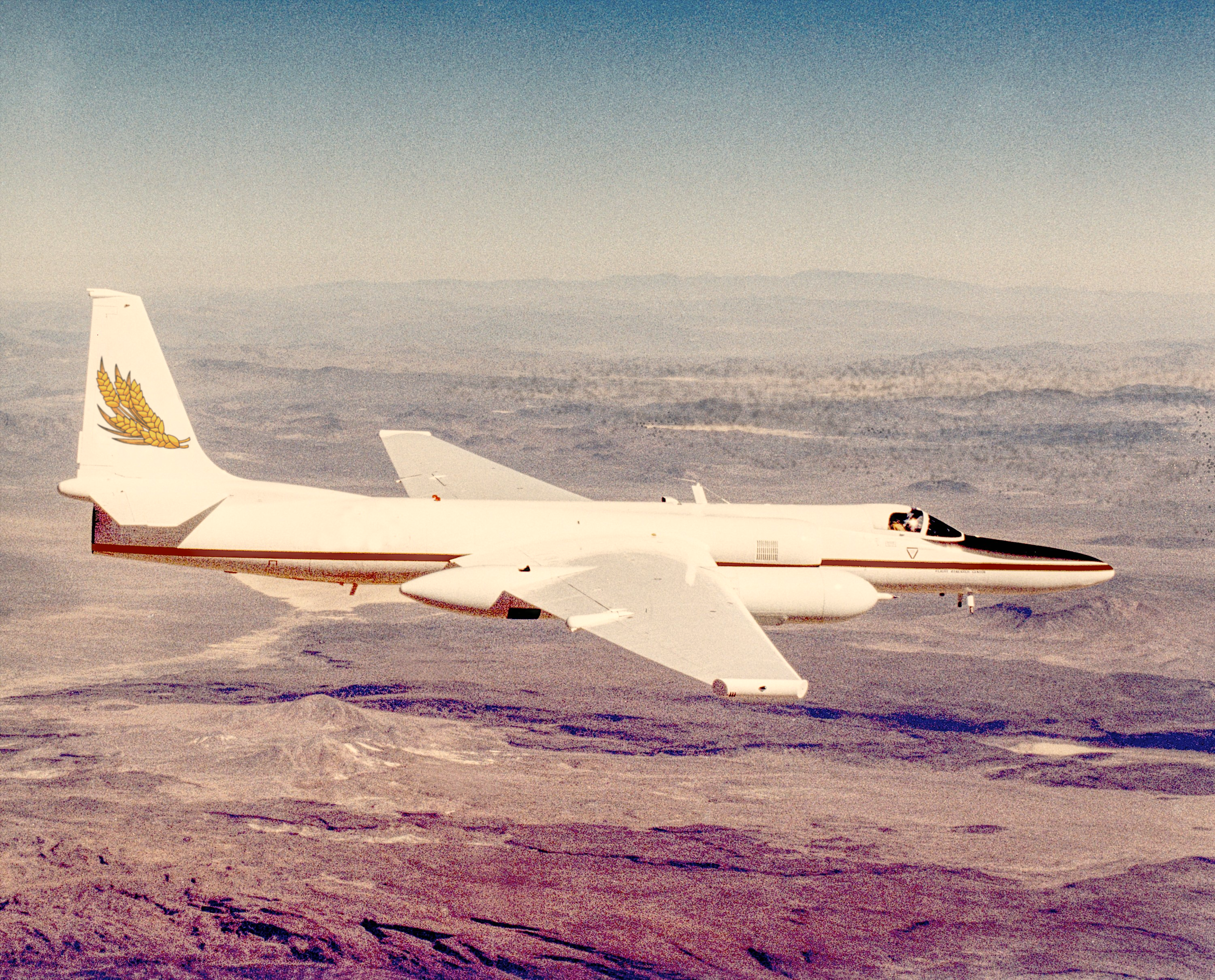Locust War

M5 Albatross operated by Goldwind in flight over Tilia NASA/Jim Ross, Public domain

The Locust War was a pest management campaign conducted by the Goldwind Agricultural Cooperative between 472 and 485 with the objective of eradicating locust swarms in Tilia.
Background
In the 460s, the cooperative partnered with SikuTech to develop and sell canister-powered farm equipment to most Tilian farms. While this technology enabled rapid expansion into nearby wildlands, pest-control practices continued to rely on local wizards, sometimes operating archaic gray-grade machines.
The unprecedented productivity growth prompted farmers to allocate most of their land to single crops (most commonly genetically uniform Monnais wheat) in order to simplify logistics and sales. Formerly wild prairie lands between adjacent farms were also cultivated, connecting multiple properties and creating expansive monocultural tracts.
The combination of vulnerable farms and outdated mitigation technology culminated in the appearance of locust swarms of unprecedented size in 472 that quickly began to tear through Tilia.
Campaign
In 472, the Goldwind Cooperative enlisted local (to the 7 constituent farms) crop duster pilots into a pest control air wing. Their M2 Crane aircraft were first outfitted with standard sprayers modified to hold locust confuser. As more farms joined Goldwind (and provided more pilots and aircraft to the campaign), Goldwind’s triplex compressors were not able to keep up with the demand for blue-grade canisters to power the aircraft. IPRO agreed to subsidize imports for 3 years until a more efficient distribution mechanism was developed.
This timeline was cut shorter as it soon became evident that even the combined capacity of nearly all Cranes in service with Tilian farms would not be enough to contain the locusts. In 474, a Crane piloted by Curtis Claire was forced down in an overrun farm after flying through a dense swarm during a spray mission. By the time his plane was recovered, only his skeleton remained.
The death of Curtis Claire turned the crisis into a war. Goldwind had already taken on significant loans, but the risk of permanently losing arable land justified ever-increasing debt. The cooperative purchased 90 M5 Albatross high-altitude airlifters, able to safely overfly swarms that would be impenetrable by Cranes. In 478, having exhausted all other funding sources, three farmers conspired to sell damaged Cranes to Ikara, violating a Pax embargo.
In 477, Greyhound completed their development of the aeromech. It was quickly discovered that aeromechs offered adequate protection against locusts, and Goldwind purchased the entire first production run (supported by IPRO, who finally saw an end to the crisis in sight). Existing pilots, having been trained to avoid swarms at all costs, were unwilling to crew the aeromechs into overrun territory even after watching their commanding officers return safely from doing the same. An agreement was made with Coachguard to supply soldiers in exchange for half of the stock of aeromechs.
Aeromechs proved to be extremely effective. Since both they and the portable sprayers were able to run on substandard canisters, blue-grade supply was able to fully support the reconstruction of farms and towns as territory was cleared. By 485, locusts were effectively eradicated from Tilia.
Aftermath
In total, roughly one-quarter of Tilian towns were completely destroyed. One third of those destroyed were rebuilt to a standardized design, centered around five triplex compressors in a public square. Many of these towns became popular destinations for displaced citizens, accelerating the centralization of Tilian society.
The remaining aeromechs not sold to Coachguard were seized by Pax authorities as part of the Crane Affair and were distributed to fire departments internationally.
todo talk about barrel bond scheme